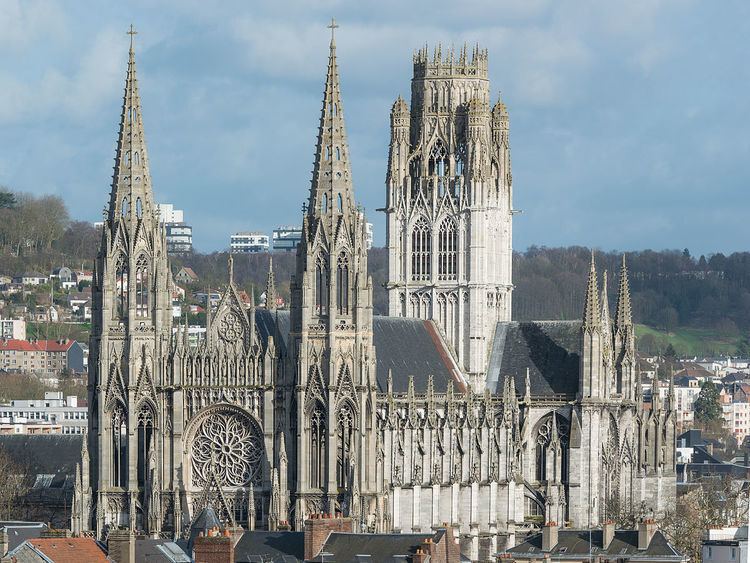Country France Website rouen.catholique.fr Dedication Saint-Ouen Archbishop Dominique Lebrun | Denomination Roman Catholic Founded 750 Opened 1537 Phone +33 2 32 08 32 40 | |
 | ||
Location City Hall Square, Rouen, Normandy Address Place du Général de Gaulle, 76000 Rouen, France Architectural styles Flamboyant, Gothic architecture Similar Church of Saint‑Maclou, Rouen Cathedral, Gros Horloge, Church of St Joan of Arc, Musée des Beaux‑Arts de Rouen | ||
Saint-Ouen Abbey Church, also referred in English as Saint-Owen Abbey Church (French: Abbatiale Saint-Ouen), is a large Gothic Roman Catholic church in Rouen, Normandy, France, famous for both its architecture and its large, unaltered Cavaillé-Coll organ, which Charles-Marie Widor described as "a Michelangelo of an organ". Built on a similar scale to nearby Rouen Cathedral, it is, along with church of Saint Maclou, one of the principal Gothic monuments of Rouen.
Contents
The Abbey
The church was originally built as the abbey church of Saint Ouen for the Benedictine Order, beginning in 1318 and interrupted by the Hundred Years' War and sacked and badly damaged during the Harelle. It was completed in the 15th century in the Flamboyant style.
The foundation of St. Ouen's Abbey has been variously credited, among others, to Clothair I and to St. Clothilda, but evidence is scanty. It was dedicated at first to St. Peter when the body of St. Ouen, Archbishop of Rouen (d. 678), was buried there; the name of St. Peter and St. Ouen became common and finally St. Ouen only. The history of the abbey, on record from the 1000, is unremarkable; a list of abbots is in Gallia Christiana XI, 140. In 1660 the monastery was united to the Congregation of St. Maur, and when suppressed, in 1794, the community numbered twenty-four. The abbey building itself was vacated by the time of the French Revolution and was subsequently occupied by the Town Hall of Rouen.
Architecture
The church is 137 m in length under 33 m high vaults. The central crossing is surmounted by an unusual lantern-style tower similar to that at Ely Cathedral in England. The tower was completed in the Flamboyant style. The well-preserved stained glass of the nave dates to the 15th and 16th centuries, and features jewel tones among panels of clear and frosted white glass. These materials allow more light to filter into the nave, creating a brighter interior than is typical of Gothic churches. Despite the use of Flamboyant tracery in the aisles, triforium, and clerestory, the nave maintains a conservative appearance through the use of compound piers, trumpet bases, and capitals which helps maintain harmony throughout the edifice. The west façade was never completed during the Middle Ages. It was constructed between 1846 and 1851 in a Neo-Gothic style that bears little resemblance to the original Late Gothic designs.
Organ
The church contains a large four-manual pipe organ built in 1890 by Aristide Cavaillé-Coll. This instrument is considered to be one of the most important organs in France, and is notable for its unusually powerful 32' Contre Bombarde. The organ stands unaltered and thus is one of the few of the master's works to speak with its original voice.
